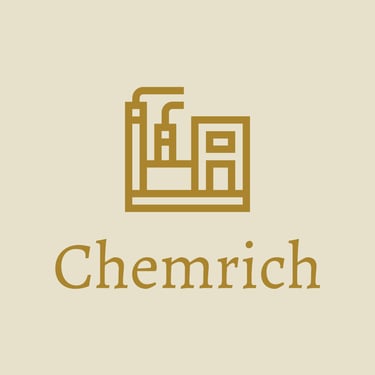Microbial and Contaminant Testing: Ensuring Product Safety, Compliance, and Trust
Discover how next-gen microbial and contaminant testing is becoming essential for sustainable formulation, product safety, and global regulatory compliance. A must-read for chemical innovators, QA teams, and brand owners.
shehan makani | eshan makani
7/25/20252 min read
Microbial and Contaminant Testing: Ensuring Product Safety, Compliance, and Trust
Microbial testing and contaminant analysis are cornerstones of product safety and quality across pharmaceuticals, cosmetics, agrochemicals and specialty materials. Rigorous microbial limits tests (e.g. USP <61>, ISO 11737) verify that ingredients and finished products are free of harmful bacteria, fungi or endotoxins, ensuring compliance with FDA, USP and ISO standards. In highly regulated sectors, failure to control contamination has led to massive recalls – one analysis found 76.8% of cosmetic product recalls (2011–2023) were due to microbial contamination . Likewise, nearly 40% of drug recall events were triggered by bioburden issues . In short, robust microbial testing underpins Good Manufacturing Practice and GMP compliance, guarding against outbreaks and preserving product efficacy .
Microbial control also bolsters green chemistry and formulation integrity. Sustainable product developers emphasize natural, biodegradable components, but many plant-derived or eco-friendly actives can harbor microbes or degrade if contaminated. By verifying purity and using rapid microbial ID tools, R&D teams can accelerate development of “clean” formulations without risking spoilage or stability problems . This protects consumers and the environment – for example, averting unnecessary waste from failed batches and avoiding harsh chemical preservatives. In practice, leading labs now deploy new genomics and proteomics methods (e.g. MALDI-TOF mass spectrometry) to identify contaminants in minutes instead of days, greatly speeding quality control .
Regulatory Compliance: Integrated microbial and contaminant testing ensures compliance with USP, ISO, FDA and other global standards. Adhering to pharmacopeial limits and GxP requirements avoids fines, delays or import bans .
Formulation Integrity: Detecting trace impurities (metals, insolubles, mycotoxins etc.) protects chemical stability. This preserves physical appearance, potency, and performance of polymers, APIs, or cosmetic formulations over time.
Brand Reputation and Trust: Companies that publicize rigorous safety testing enhance customer trust. In fact, enterprises known for strict contamination control often enjoy a reputation for quality and sustainability. By contrast, a single contamination recall can damage a brand for years.
Recent studies emphasize that preventive testing is far more cost-effective than recalls. For example, an analysis of FDA enforcement data showed thousands of voluntarily recalled dermatology cosmetics – most due to microbes . Providers are thus marketing “contamination control” services not just as safety net but as value-add offerings: improved uptime, fewer rejected lots, and demonstrable QA programs all appeal to formulators and procurement teams .
In summary, advanced microbial and contaminant testing – including next-generation DNA/RNA-based assays – is a foundational value-add for chemists. By embedding rapid microbial assays and trace analysis early in R&D and production, companies satisfy USP/ISO requirements, support green formulation goals, and fortify brand equity. The business impact is clear: fewer product failures, compliance with international regulations (USP, ISO, FDA), and stronger market trust in “safe, sustainable” chemistry .
Sources: Contemporary regulatory analyses and industry studies, along with recent news releases and technical reports, were used to compile these insights . Each citation provides evidence from global trends and research on chemical testing, AI in formulation, digital labeling, and predictive stability.
Chemical Solutions
Trusted partner for industries seeking high-quality chemicals, custom manufacturing solutions, and advanced pharmaceutical equipment.
Innovation
Growth
© 2025. All rights reserved.
Connect
Chemrich Global.


